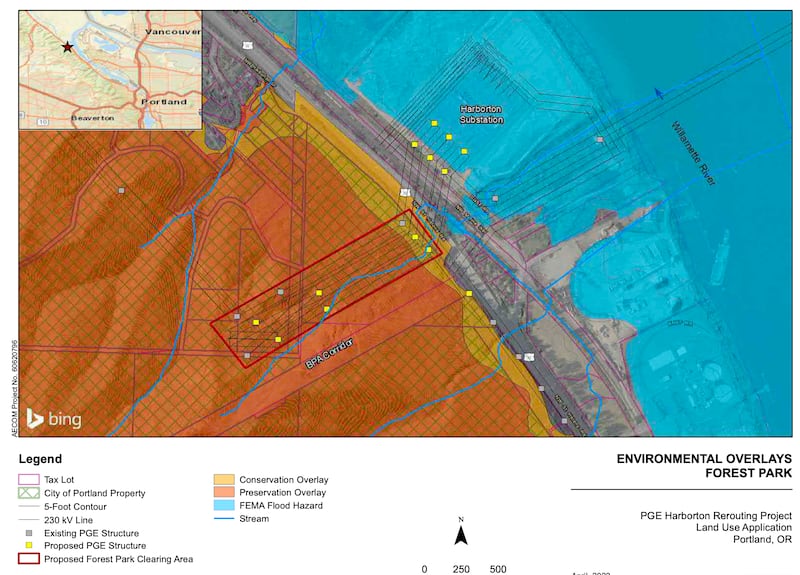The Forest Park Conservancy, a nonprofit that deploys volunteers to maintain trails and plant native flora, says it is “deeply concerned” about Portland General Electric’s interest in cutting trees in Forest Park to boost electricity transmission.
PGE’s exploration of a plan to clear trees and other foliage in the park came to light last week after WW reported on a phone survey asking respondents how they would feel if Oregon’s largest utility cut trees on 3 acres of land above Linnton on Highway 30.
“This area is rich in wildlife diversity, larger trees, and has a stream running through it where the northern red-legged frog, an at-risk species as noted in the Special Status and At-Risk Species List 2022 Preliminary Update Report prepared by Environmental Services, has been observed,” Forest Park Conservancy interim executive director Marianne Wilburn said in a statement to WW.
Each year between November and May, volunteers fan out at night and help northern red-legged frogs cross Highway 30 from Forest Park to the Harborton wetlands, where they breed. After the amphibians lay eggs, volunteers for the “Frog Taxi” help them return to Forest Park.
In an “early assistance” planning application filed with the Portland Bureau of Development Services in May 2022, PGE proposed to reroute transmission lines that lead west from its recently constructed Harborton electrical substation on the Willamette River and up through Forest Park along BPA Road, a popular access point for the Wildwood Trail and other hikes in Forest Park. PGE wanted to put in 13 foundations and poles for the new wires.
Trees and shrubs would be cleared in a corridor 250 feet wide by 1,000 feet long, the application said, for a total of almost 6 acres. The work would be done within PGE’s easement in the area. An easement allows a party to use land that it doesn’t own for a specified purpose.
The Forest Park Conservancy “wants to see alternatives presented by PGE,” Wilburn said in her statement. “Where else can this work be done? Additionally, we would like to see why this site is being favored over these alternatives and how PGE proposes to minimize their impacts in Forest Park.”
In its application, PGE says it would “implement best management practices to reduce soil erosion, sediment runoff, and other pollutants from leaving the work site to the extent practicable.” The utility said it would make up for the tree removals by paying into Portland’s Tree Planting and Preservation Fund.
PGE spokeswoman Andrea Platt says the conservancy may be responding to an out-of-date plan.
“It appears the Forest Park Conservancy’s response relates to a project concept that PGE explored in 2022 with an early-assistance conference with involved city bureaus,” Platt said in a statement. “We received thoughtful, frank feedback about thorough exploration of all possible alternatives and environmental mitigation standards—and the rightfully high bar for projects in Forest Park. Since then, we have been looking at ways to update the concept and reduce impacts, doing our due diligence based on the feedback we received. We respect Forest Park as a beloved, iconic Portland treasure.”
PGE said it must undertake the project “to create redundancy in the Northwest Portland transmission corridor” and to “maintain stable power in the Northwest Industrial Area while meeting the increased electrical power demands of surrounding communities.”
According to the application, PGE planned to start “extensive tree removal” in the spring of last year. Construction of the poles was to start this spring and take 30 weeks. As of now, no trees have been cleared.
Fights over the electrical grid are raging worldwide as utilities aim to boost capacity for clean power and reduce carbon emissions. Environmentalists are keen to bolster the grid, but wary of development that reduces tree canopy and animal habitat.
The debate is playing out statewide now as Oregon legislators consider a bill that would remove state oversight of new energy facilities proposed on federal lands. Backers point to a 290-mile transmission line in southeastern Oregon. Idaho Power applied for the permit in 2008, but construction didn’t begin until 2023 because of permitting delays.


